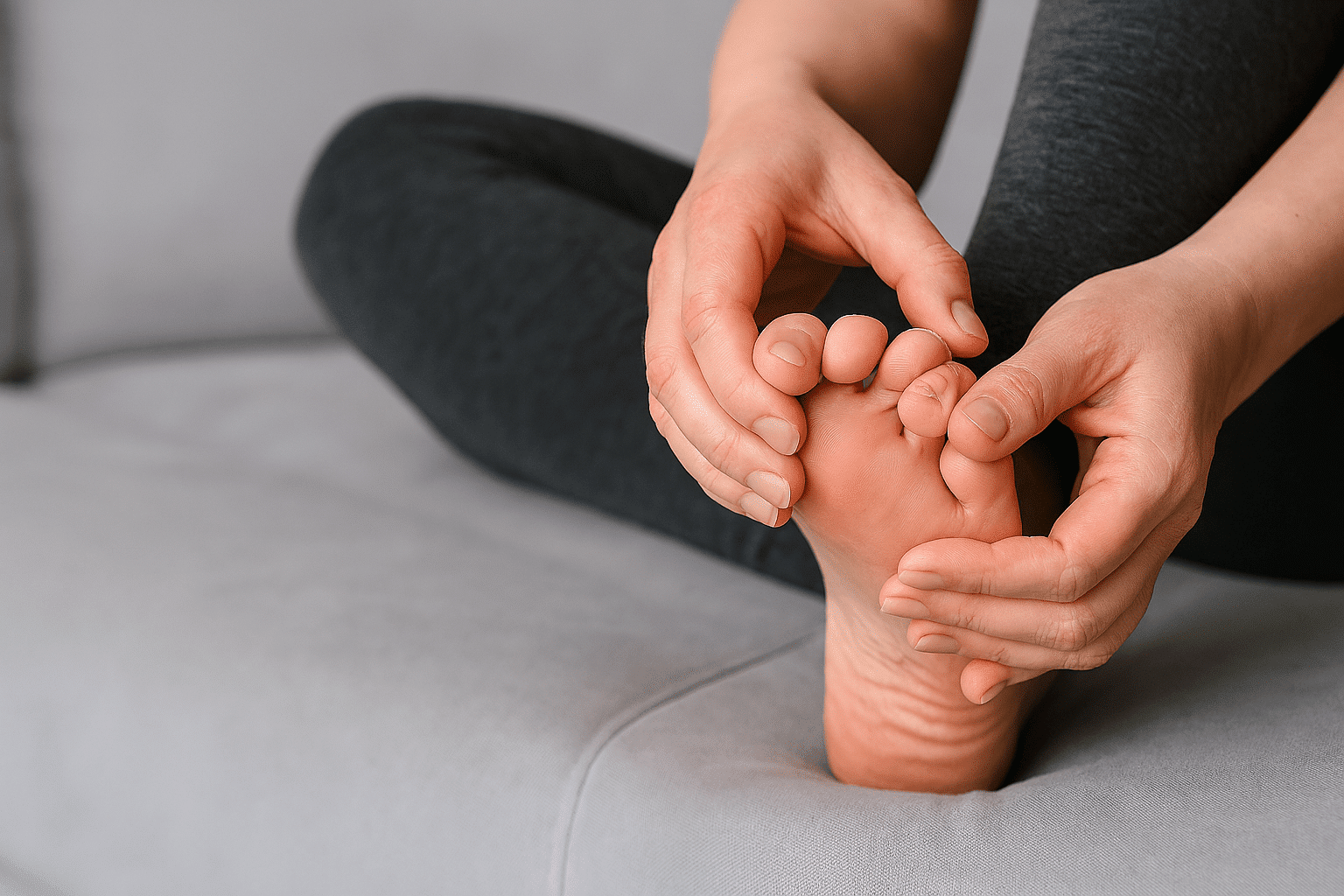Introduction: When Toes Take a Turn
Imagine slipping on your favorite pair of shoes – only to feel a persistent ache in your toes. You glance down and notice one or more toes curling unnaturally, refusing to lie flat. This isn’t just a cosmetic concern—it’s likely a condition called hammertoe, which affects millions of people, often silently until the discomfort becomes impossible to ignore.
Hammertoes are more than just bent toes. They’re a sign that something deeper is happening in your foot’s structure—something that, if left untreated, can impact your mobility, comfort, and confidence. Whether you’re just noticing a slight curl or dealing with chronic pain, understanding your options—from gentle stretches to surgical correction, — can can help you take the right steps toward relief.
What Is a Hammertoe?
A hammertoe is a common foot deformity where one or more of the smaller toes (usually the second, third, or fourth) bend downward at the middle joint. This gives the toe a hammer-like appearance, hence the name. The condition can be flexible, semi-rigid, or rigid, depending on how advanced it is:
- Flexible hammertoes can still move and respond to non-invasive treatments.
- Semi-rigid hammertoes are stiffer and harder to uncurl.
- Rigid hammertoes are locked in place and usually require surgical treatment.
Causes: Why Do Hammertoes Happen?
Hammertoes develop when the muscles and tendons in your toes become imbalanced. This imbalance can be triggered by:
- Poorly fitting shoes: High heels or narrow toe boxes force toes into unnatural positions.
- Foot structure: High arches, flat feet, or unusually long toes can increase pressure on toe joints.
- Injury: Trauma to the toe can disrupt its alignment.
- Medical conditions: Diabetes, arthritis, and neuromuscular diseases can contribute.
- Bunions: These can push adjacent toes out of alignment.
Over time, the constant pressure and misalignment cause the muscles to tighten, eventually locking the toe into a bent position.
Symptoms: More Than Just a Bent Toe
Hammertoes often start subtly but can progress surprisingly quickly. Common symptoms include:
- Pain at the top of the toe or ball of the foot
- Swelling and redness
- Corns and calluses from friction
- Difficulty walking or wearing shoes
- Stiffness or inability to straighten the toe
If you notice any of these signs, seeking early treatment is key.
Non-Surgical Treatments: Starting Simple
For many, hammertoes can be managed without surgery—especially in the early stages. Here’s how:
- Footwear Changes
Switching to shoes with a wide toe box and good arch support can relieve pressure, high heels and tight, narrow footwear. Stretching devices can help widen existing shoes.
- Padding and Taping
Over-the-counter toe pads cushion the affected area. Medical tape can help hold the toe in a more natural position.
- Orthotic Devices
Custom or over-the-counter orthotics support your foot’s natural shape and help realign the toe. Toe spacers may also be used to reduce friction and maintain alignment.
- Pain Management
Nonsteroidal anti-inflammatory drugs (NSAIDs) like ibuprofen can reduce pain and swelling. However, they should be used under medical guidance.
- Toe Exercises and Stretches
Regular exercises can strengthen muscles and improve flexibility:
- Toe stretches: Gently pull the toe straight and hold for 10–15 seconds.
- Towel scrunches: Use your toes to scrunch a towel toward you.
- Marble pickups: Pick up marbles with your toes to improve dexterity.
These simple exercises can be powerful tools for reversing early-stage hammertoes.
When Surgery Becomes Necessary
If conservative treatments don’t provide relief or the hammertoe becomes rigid, surgery may be the best option. Surgical correction is typically outpatient and may involve:
- Tendon release or transfer: Adjusting the tendons to straighten the toe.
- Joint resection: Removing part of the bone to allow the toe to lie flat.
- Fusion: Permanently joining bones to maintain alignment.
- Implants or pins: Used to hold the toe in place during healing.
Recovery varies but most patients return to regular shoes within 6–8 weeks. Full recovery for high-impact activities may take 3–6 months.
A Patient’s Perspective: Living With and Overcoming Hammertoes
Meet Linda, a 58-year-old avid walker who began noticing discomfort in her second toe. “It started as a little ache,” she recalls, “but soon I couldn’t wear my favorite sneakers without pain.” After trying toe stretches and switching shoes, she saw improvement—but not enough.
Her podiatrist recommended a minor surgical procedure. “I was nervous,” Linda admits, “but the care team explained everything. The surgery was quick, and I was walking again in a few weeks.” Today, Linda is back to her daily walks, pain-free.
Her story is a reminder that while hammertoes can be frustrating, they’re also treatable—with the right approach.
Prevention: Protecting Your Toes for the Long Haul
Preventing hammertoes starts with smart choices:
- Choose proper footwear: Wide toe boxes, low heels, and good arch support.
- Monitor foot health: Check for changes in toe shape or pain.
- Maintain a healthy weight: Reduces pressure on feet.
- Stretch and strengthen: Regular foot exercises keep muscles balanced.
- Avoid prolonged pressure: Don’t wear tight shoes for extended periods.
Conclusion: Straightening Out the Path Forward
Hammertoes may seem like a small issue, but they can have a big impact on your quality of life. The good news? You have options. From simple stretches and footwear changes to advanced surgical techniques, treatment is available—and effective.
The key is early intervention and personalized care. Whether you’re just noticing a curl or dealing with chronic discomfort, don’t wait. Talk to a podiatrist, explore your options, and take the first step toward straighter, healthier toes.


